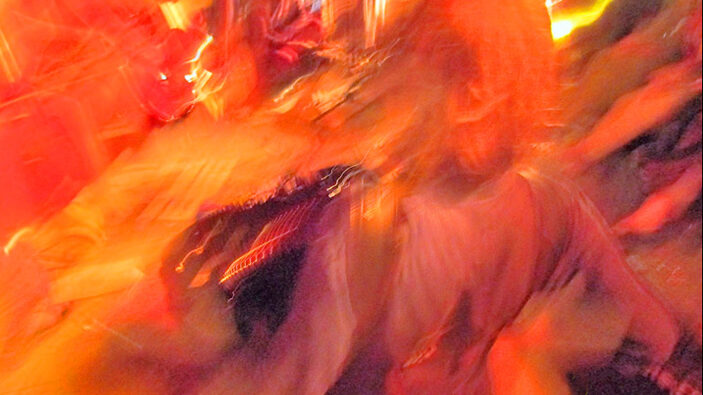“Key management;” this becomes important in our modern lives as we acquire multiple house, many vehicles and businesses. Security is an issue like never before. We have keys of all shapes and sizes, remote electronic keys and keypunch pads. For me, it brings up a memory of simpler times.
The house I grew up in was Circa 1930’s. A front porch spanned the front of the house with 5 steps providing access to the space that fed the over-active imaginations of pre-schoolers shared by my friends and myself. The porch held a round metal table, classic metal rocking chairs that actually bounced, and a classic cushioned glider complete with a loud squeak when moved. A thick, sweet-smelling honeysuckle vine hugged the glider, bringing the promise of spring. 
The floors inside were dotted with heating ducts covered with lacey metal covers, a parlor with an upright piano, a stair case complete with “sliding” banister and a musty smelling, walled-in back-staircase and the back door also sported a small porch with its 5 steps. Heavy skeleton keys opened the doors and the water heater groaned into action at the push of a black button.
My dad had converted the large octopus coal-style furnace to gas sometime in the mid 1940’s. Therefore, the former “coal room” was transformed into my playroom; to enjoy my dollhouse, a miniature china tea set, my older brother’s old trucks or ride my tricycle around the large furnace and have plenty of smooth floor to roller skate in the winter.
My mother reigned over the gardens, one forming long and narrow strip between our driveway and the Little family’s driveway. She prized her peonies, strawberry plants and rhododendrons growing in that space. I remember “helping” plant, water and weed.
Of course, the pinnacle event came when the strawberries were ready to pick. They glistened red with dew, almost reaching out to your hand to help you guide their way into your cereal bowl. I was only 4, but I remember the joy of running out the back door, clad in PJ’s, sporting bare feet and stumbling over the stones in the driveway, enduring whatever pain was inflicted by the gravel to reach the dew-covered strawberries. That chubby little girl is me, a bit younger than 4.
Is it possible that the strawberries of memory were sweeter tasting than today’s berries or is it sweeter in memory? Unequivocally, the berries were well tuned with the vintage 1946 corn flakes. I wonder if corn flakes have changed at all in the 60 or so years—perhaps they are the same or now more fully whole grain, full of supplements and nutritionally geared to keep up with the times. (To see a of the history of corn flakes, go to; http://www.ideafinder.com/history/inventions/kelloggcf.htm)
One misty, cool morning looms in my memory. My dad must have been away on tour with the RPO. Mom was in her housecoat. I was pajama clad as above and bare foot. We scooted outside to pick berries. The back door slammed shut, locked and stood solidly closed. I remember innumerable occurrences of being locked out, but later in the day, fully clad and less “desperate.”
To get back in, we always had recourse; two neighbors with skeleton keys that matched our door. We ran next door to the Little’s, fearing awakening them. Then we remembered their two-week trip to the Mountains. Perhaps that meant the Adirondacks or the Catskills.
The Shubener’s, also owned the “right key” but lived 3 doors away. I am sure my mother was highly embarrassed that anyone see her in her housecoat, but I am sure we both traipsed to their door—no answer, no one home. It felt like hours to me, but our problem became smaler when a neighbor in the apartment house across the street saw us looking forlorn. Perhaps we were sitting on the front steps, chins in hands. He returned to his apartment and emerged again holding a huge “jailer” ring of skeleton keys. Success, one of the keys worked and opened our door. 
I don’t have the memory, but I am sure my mother showered our neighbor/savior with dew-clad strawberries and excessive thanks. We now added another source in impending peril, a large ring of heavy, gray metal skeleton keys. It just takes patience to find the right one to open our door.














 The sun was still dancing in and out of the cloud layers, playing its little game with us, lighting our images. A fence lined the driveway up to the barn, but did not block us from entering the grassy field in front of the barn. We shot more photos and conjectured about the owners and the history of this place before heading back down the driveway toward the car. How amazed we were that as we approached the car, the heavy cloud layer returned, the light turned back into the gray haze and the air held a heavy mist that tickled our noses and froze our fingers even more. We drove back to the house, ready for some hot tea, and to delve back into helping to prepare the fabulous Thanksgiving feast that Sandy had planned.
The sun was still dancing in and out of the cloud layers, playing its little game with us, lighting our images. A fence lined the driveway up to the barn, but did not block us from entering the grassy field in front of the barn. We shot more photos and conjectured about the owners and the history of this place before heading back down the driveway toward the car. How amazed we were that as we approached the car, the heavy cloud layer returned, the light turned back into the gray haze and the air held a heavy mist that tickled our noses and froze our fingers even more. We drove back to the house, ready for some hot tea, and to delve back into helping to prepare the fabulous Thanksgiving feast that Sandy had planned.